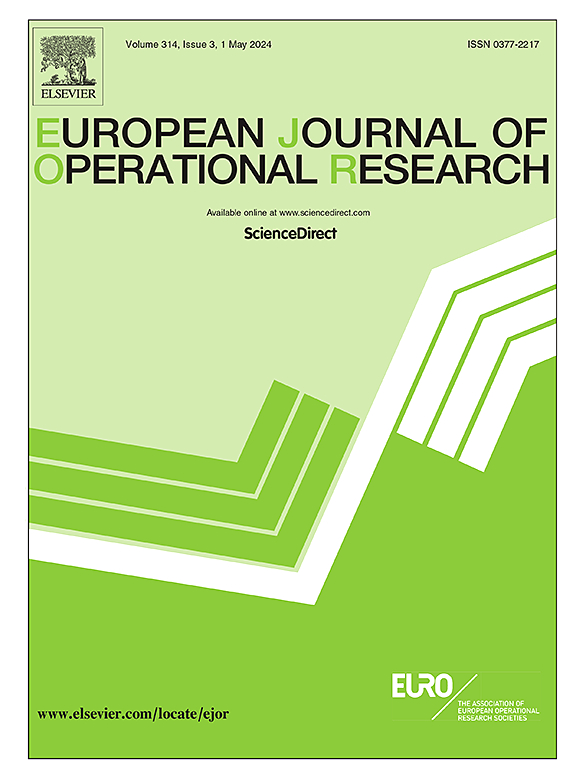卖方履行渠道和销售渠道的均衡分析
IF 6
2区 管理学
Q1 OPERATIONS RESEARCH & MANAGEMENT SCIENCE
引用次数: 0
摘要
卖家的产品既可以通过平台渠道销售,也可以通过自己的渠道销售。此外,卖家的订单既可以由平台完成(FBP),也可以由第三方商家完成(FBM)。我们考虑一个平台和一个有代表性的卖家,他们在销售两种可替代产品方面展开竞争。我们建立了一个分析框架,通过比较以下四种模式来确定每家公司的结构偏好:自有渠道与 FBP(OP 模式)、自有渠道与 FBM(OM 模式)、平台渠道与 FBP(PP 模式)以及平台渠道与 FBM(PM 模式)。我们的研究得出了几点启示。当卖家的产品通过自己的渠道或有佣金的平台渠道销售时,平台总是倾向于为卖家提供履约服务--卖家可能不愿意接受这种服务。相反,当卖家的产品通过平台渠道销售并收取佣金时,平台更有动力 "保护 "卖家的利润,在卖家选择 FBP(或 FBM)时为其提供(或不提供)履约服务。这些结果表明,平台和卖家就卖家订单的履行渠道达成一致的可能性受佣金率和卖家销售渠道的影响很大。此外,即使平台总是愿意为卖家提供销售渠道,卖家对这一提议的接受程度也受其自身履行渠道的影响。最后,我们的分析表明,平台和卖家唯一可能的双赢均衡结构是模式 PP 和模式 PM。本文章由计算机程序翻译,如有差异,请以英文原文为准。
Equilibrium analysis of the seller’s fulfillment channels and sales channels
Sellers’ products can be sold either through platform channels or through their own channels. Also, sellers’ orders can either be fulfilled by platforms (FBP) or be fulfilled by third-party merchants (FBM). We consider a platform and a representative seller that compete in selling two substitutable products. We develop an analytical framework for identifying each firm’s structure preference by comparing four modes: own channel with FBP (Mode OP), own channel with FBM (Mode OM), platform channel with FBP (Mode PP), and platform channel with FBM (Mode PM). Our research establishes several insights. When the seller’s products are sold through either his own channel or the platform channel with a low commission rate, the platform always prefers to provide fulfillment services for the seller – who may be unwilling to accept that service. In contrast, when the seller’s products are sold through the platform channel with a high commission rate, the platform has more incentive to “protect” the seller’s profit by offering (resp. not offering) fulfillment services to him when he prefers FBP (resp. FBM). These outcomes indicate that the likelihood of platform and seller agreeing on a fulfillment channel for the seller’s orders is strongly affected by the commission rate and the seller’s sales channel. Besides, even though the platform is always willing to provide sales channels for the seller, a seller’s acceptance of that offer is influenced by his own fulfillment channels. Finally, our analysis reveals that the only possible win–win equilibrium structures for the platform and the seller are Mode PP and Mode PM.
求助全文
通过发布文献求助,成功后即可免费获取论文全文。
去求助
来源期刊

European Journal of Operational Research
管理科学-运筹学与管理科学
CiteScore
11.90
自引率
9.40%
发文量
786
审稿时长
8.2 months
期刊介绍:
The European Journal of Operational Research (EJOR) publishes high quality, original papers that contribute to the methodology of operational research (OR) and to the practice of decision making.
 求助内容:
求助内容: 应助结果提醒方式:
应助结果提醒方式:


